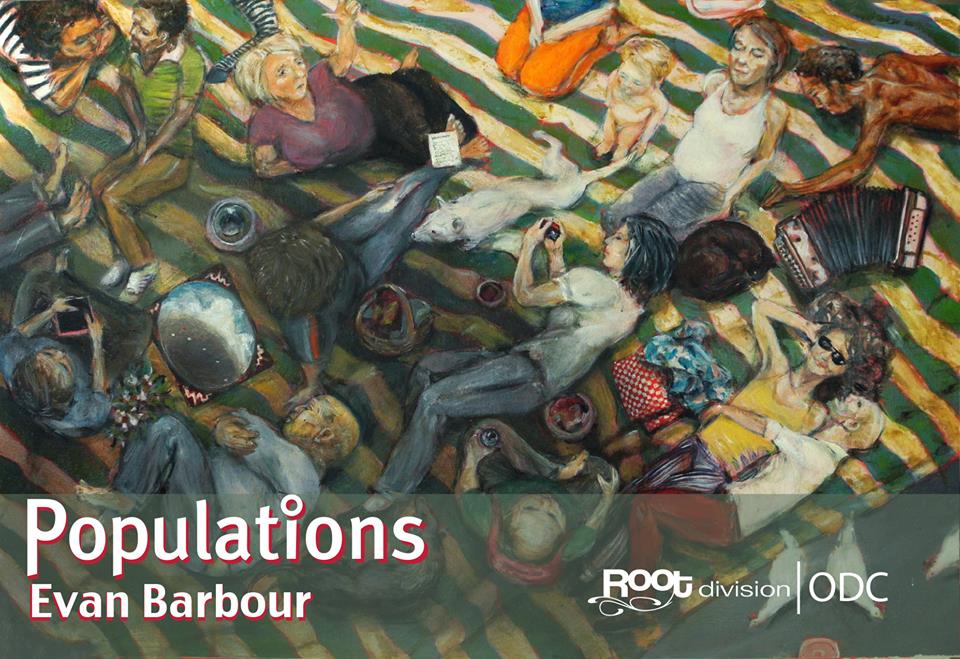
Root Division is thrilled to partner with our former neighbors at ODC by curating the theater lobby with the work of our Studio Artists and Affiliates. This season, we will present a series of shows addressing the shifting landscape of San Francisco. Our first features a new body of work by Evan Barbour, former Studio artist and current Affiliate, linking the aerial views of humans to slides of microbiology, in a nuanced commentary overpopulation. Root Division’s Exhibitions & Events Director, Amy Cancelmo, interviews artist Evan about this new body of work.
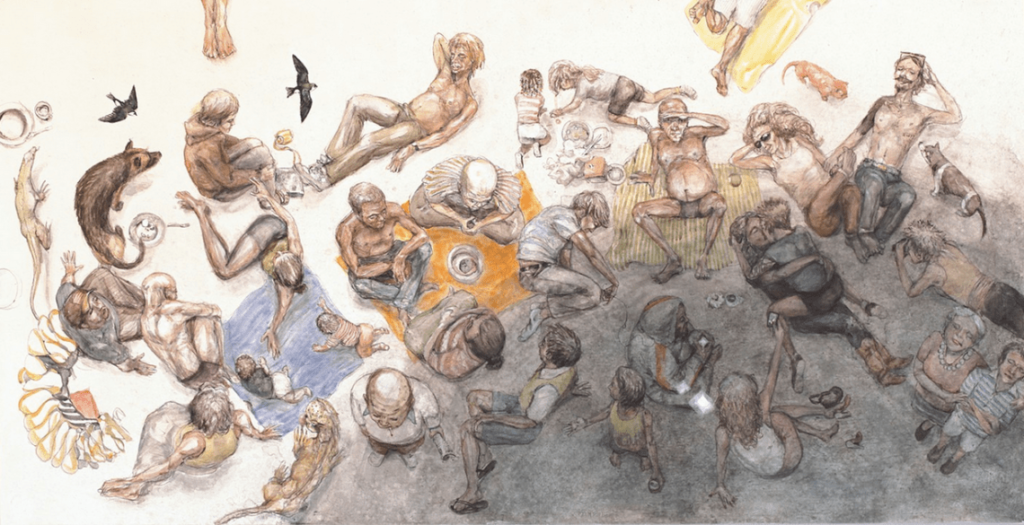
Amy Cancelmo: Tell me a little bit about this new body work, it’s really interesting to see you working with human figures.
Evan Barbour: This new work is indeed a departure from my usual material. I prefer to portray non-human life forms to human subjects because I believe people (economists, educators, engineers, etc.) are overly concerned with other people. I think if humans, as a species, spent more time considering other life on our planet (otters, spiders, clovers, etc.), and less time considering our own kind, then the world would ultimately be a healthier place, ecologically speaking.
EB: The two paintings with aerial views of people (Overhead Us and Who Watches as He Stitches) stem from dreams I’ve had of masses of people in reclining postures, as though at an outdoor music festival. It wasn’t until I attempted to draw these scenes from my imagination that I related these compositions with past biological work, work that had a similar top-down perspective as though looking at smaller beings through a magnifying lens.
AC: I know you have a background in scientific illustration, tell me a little more about that, and how it plays into your practice.
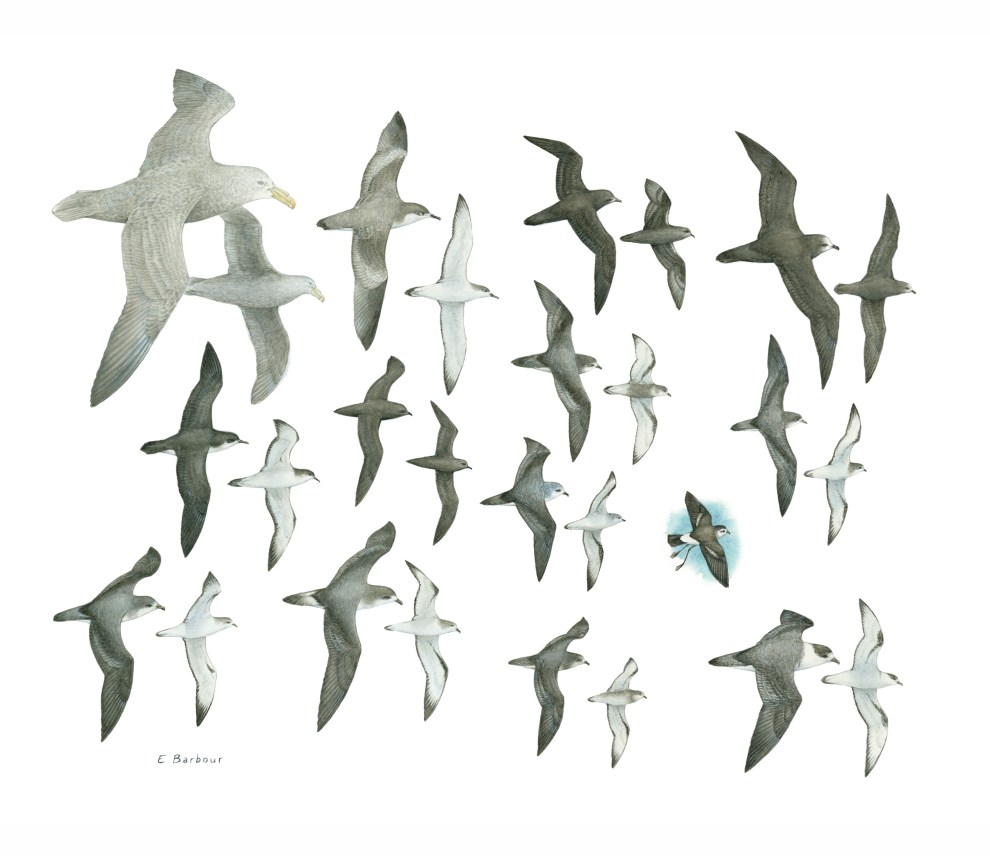
EB: I’ve always been attracted to detailed, focused paintings and photographs of plants and animals. My scientific illustrations mainly consist of didactic paintings of birds for field guides, where accuracy and clearness are essential to showing viewers what specific species look like under ideal circumstances. I now want to make images that are not literal representations of nature, yet are somehow truer to nature in a messy, organic, and maybe poetic way. Rather than focusing on how what an individual species looks like, I’m now trying to capture the feeling of the tangled web of biodiversity inherent to any natural habitat.
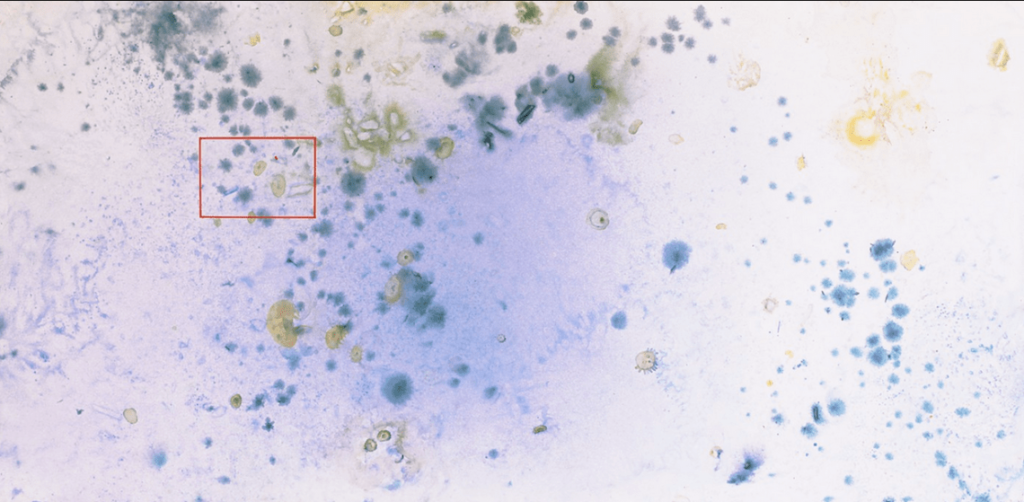
AC: What is your source material for the works you have on display at ODC?
EB: I usually work from photographs and specimens as reference. For this work, I simply drew figures from imagination (Overhead Us, Who Watches as He Stitches), or composed the paintings with random spritzes of paint (Here ->,Spore Spread). These are two very different ways of initiating a painting, yet ultimately these processes bore some resemblance to each other. In both cases, I used a scatter of points to help me develop a composition with no central focal point, but rather constellations of subjects with no clear relationship from one to another.
AC: Looking at your figurative works in relation to the abstract microbiologically inspired works, I can’t help but think that there’s some commentary there on humanity or overpopulation as a virus. Do you think humans are a virus on the planet?
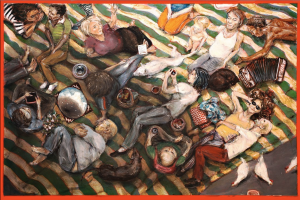
EB: I think the comparison of humans to viruses is imperfect. However, I ascribe to Richard Dawkin’s theory in The Selfish Gene, which reasons that human genes are programmed to multiply by the same evolutionary mechanisms as the minutest of organisms. Whether in an amoeba or an albatross or an attorney, our genes encourage the same selfish behaviors necessary to proliferate, often at the expense of other beings.
The seemingly random distributions by which any population spreads makes for an interesting comparison. How many of us have flown over a city and found the sight similar to the spreading of mold or moss? Yet, I’m not suggesting that humans are like a virus on the planet. Such a comparison would assume a greater host, like Earth is a living being, or Gaia, and I’m not willing to go that far.
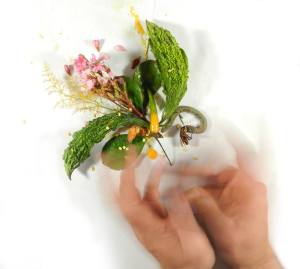
AC: With such a dramatic perspective there’s sort of a voyeuristic feeling. Tell me a little bit about the idea of surveillance in this work?
EB: I’d prefer to keep my distance from such a politically-charged term as “surveillance.” That said, this work includes the idea of people watching other people. I think we all enjoy watching other folks, to some degree, especially when we know the people we’re watching are unaware we’re watching them! I think there’s something similar in human voyeurism to our fascination with observing, say, an ant colony or an aquarium.
AC: What is your studio practice like? You were a Root Division Studio Artist, actually the first ever Blau Gold Teaching Fellow, with a coveted fully subsidized studio. Where are you working, and what are you working on now? Are you still doing performance and photography?
EB: I currently rent a 10 x 10 x 10′ studio which I built in an old warehouse in West Berkeley. I’ve devoted the past six months to painting, but have recently switched to taking photographs of still-life compositions using a copy stand. I still use paint in the backgrounds of my photos, which are necessarily small in scale.
I’ve dubbed my studio the Distillery because I’m trying to distill or reduce my multifarious ideas to concentrated, yet complex images. And I hope my work reads as such, whether in my paintings or photographs. I love feedback from everyone! Check out more of my work at evanbarbour.com.
And check out Evan Barbour Populations in the ODC Theater Lobby now through February 27th!
